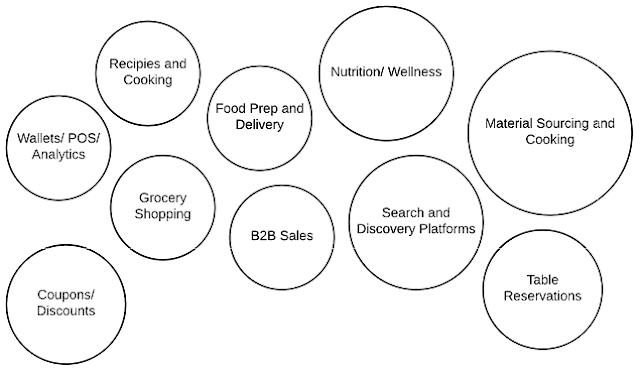on
The Foodtech Startup Scene
What would you do if you were hungry at 11.00 pm on a weekday and don’t have anything in your kitchen? Go to your friend’s place or some late night chai-wallah place? But now, you have an option of ordering online, something you did not have a couple of years back. With startups entering this space, food ordering is the easiest way to satiate your hunger quickly. I have ordered from a few of them and decided to put down my experiences and notes from content available online on the matter.
What is the business model like?
Most of them are either marketplace model aggregators i.e. you go to the provider’s website and choose the restaurants from which you wish to order. The service provider may also deliver the order. (Eg. Swiggy, Zomato, TinyOwl etc.)
The problems that players using the marketplace model in the foodtech space are related to inefficiency of restaurants to handle orders.
On a busy evening, a restaurant may have to handle a lot of orders, which is of course done manually when there are no apps. Also, when restaurants themselves deliver the orders, staffing of delivery boys and their availability is a pain point. But if you think of the end-to-end operation cycle right from sourcing raw material, food preparation to packaging and delivery, there is very little value that aggregators add to the entire experience and for the end user.
This is exactly where the other model comes into the picture. Players like Box8, EatFresh, FreshMenu etc. in this space control the food prep, packaging and delivery. They have their own kitchens and mostly deliver their orders themselves too. However, this is a very capital intensive exercise. It is probably to reduce operational losses or to capture a higher market share that EatFresh and FreshMenu have got themselves listed on Swiggy.
What do the existing startups do differently from their competition?
I have tabulated this info for few of the startups with their USPs below. This is an indicative and as-is info at the moment.
| Name | Model | USP |
|---|---|---|
| Swiggy | Marketplace | Tracking delivery on app and has a lot of repeat orders |
| Box8 | Inventory | Delivery till 1am |
| Zomato | Marketplace | Food Search and Discovery service, Pivoted to delivery |
| Faasos | Inventory | Also has dine-in option |
| Eat Fresh | Inventory | Food prepared by Chefs |
And what else could these pivot to or what is the scope of complete operations that would be possible in this space? I have borrowed some headers from this poster in which the complete value chain of the food-tech industry globally has been wonderfully charted.
Why did many players in this space fail?
Although there is huge scope to expand in the foodtech market, the focus here has to be on:
- Innovation in technology and operations - not investing in tech for quicker and more efficient operations could kill the venture before anything else.
- In the case of marketplace model, effective management of vendors and good control over leakages - if this check is not performed, the service may end up in an agonizing state as that of Foodpanda.
- Control over Customer Acquisition Costs (CAC) - This sector currently has a lot of players who are floating by pulling in more orders. However, their CAC is very high. This could be one of the reasons for the downfall of TinyOwl
- Unique Business Model - or solving a real, significant problem is a must. Companies that failed were mostly a me-too firm with no actual differentiation in their operations.
References:
- 8 food tech startups to watch out for in 2015
- Where Is The $48 Billion Food Tech Startup Industry in India Headed?
- What is wrong with food-tech startups? - Indiaretailing.com
- The Periodic Table of Food Tech
- Food-tech startups get gastric trouble
- How food-tech startups can fix the fault in their business models
- Analysis of food tech startups failures
- What’s wrong with food tech? - Livemint
- Foodtech startups - the one big thing that everyone seems to be missing
- Is the time up for food tech startups like Foodpanda, Zomato? - Times of India
- Flawed business model, funds crunch cripple food-tech sector
- The complete value chain of the foodtech industry globally has been wonderfully charted here
